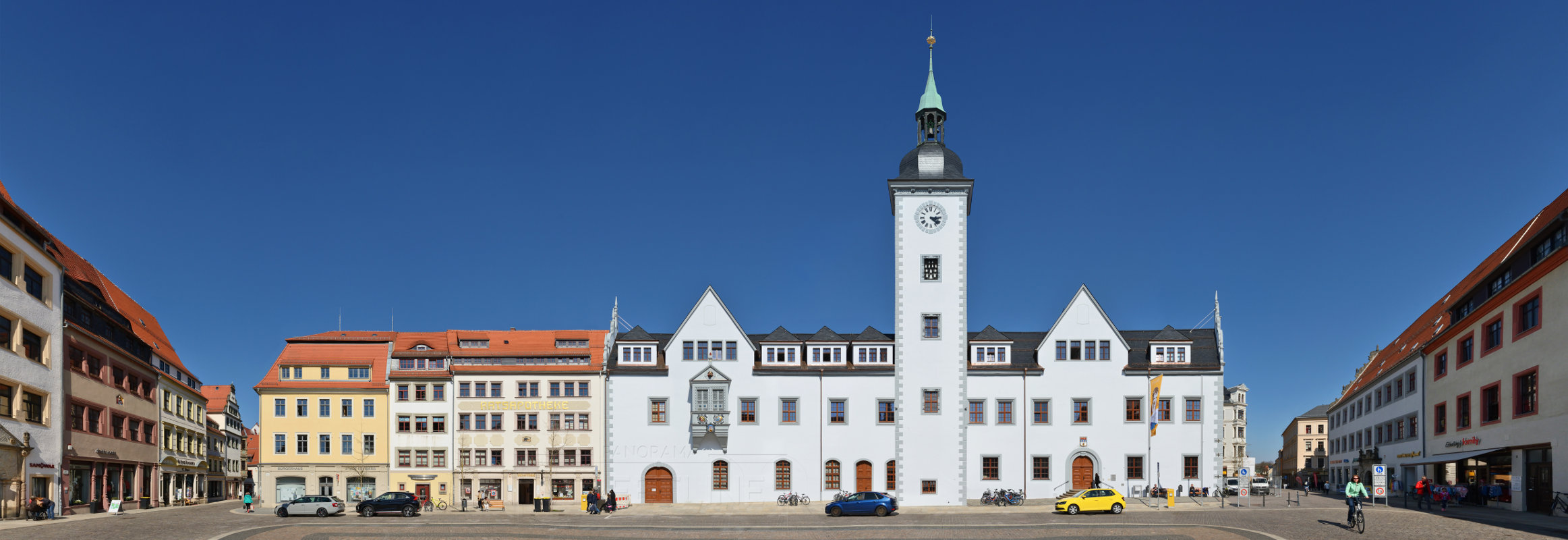The Obermarkt
The Obermarkt (Upper Market) was created in the late 12th century during the planned construction of Freiberg’s upper town. Most of the buildings date from the 16th century and are characterised by high gable roofs due to relatively high snow loads in winter. In the 15th century, the Obermarkt was the place of execution of the prince robber Kunz von Kauffungen. The buildings here on the north-east side of Obermarkt from left to right: as a corner building the Martinsche Haus from the 18th century, then a Freiberg town house from the early 16th century, a residential building from the 16th century with a pharmacy and finally the town hall of the city of Freiberg in Renaissance style.
The Freiberg Town Hall
On the north-east side of the market square we see Freiberg’s wide town hall, a typical Renaissance building which was erected between 1410 and 1474 and later underwent numerous alterations. It is one of the most valuable secular buildings in Freiberg’s historic old town and is significant in terms of urban development. In 1912, an extension was added to the north-east corner of the building in place of the former Stadtfrontfeste. The building also houses the Lorenz Chapel (1514) and the richly decorated and coat-of-arms oriel bears a gaff head (with reference to the prince robber Kunz von Kauffungen). The featured tower has a tower clock on all four sides and a carillon. The latter was made of Meissen porcelain in 1986 and plays the Steiger song “Glück auf, Glück auf, der Steiger kommt” twice a day (11:15 and 16:15).
Ratsapotheke
The Ratsapotheke building was built as a residential house in the 16th century and was later joined together from two neighbouring buildings. The cross-vaulted cellar with a sandstone column is unusual. A relief made of sandstone between the 1st and 2nd upper storey, which shows a black elephant, is conspicuous. It names the building “Privilegierte Apotheke Zum schwarzen Elephanten”.
UNESCO World Heritage
Since 2019, the historic old town of Freiberg has been part of the UNESCO World Heritage Site Montanregion Erzgebirge/Krušnohoří.


